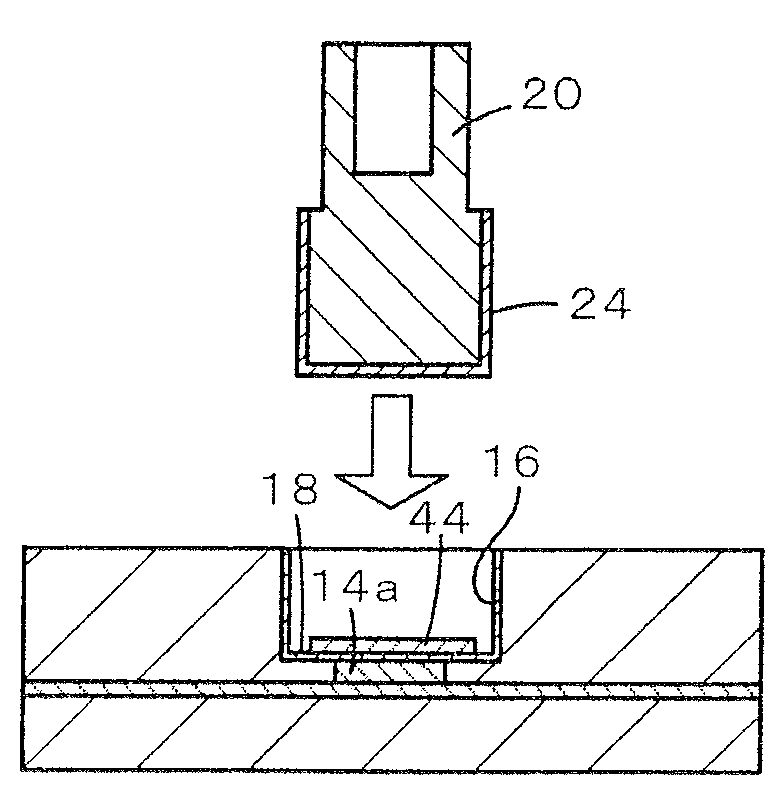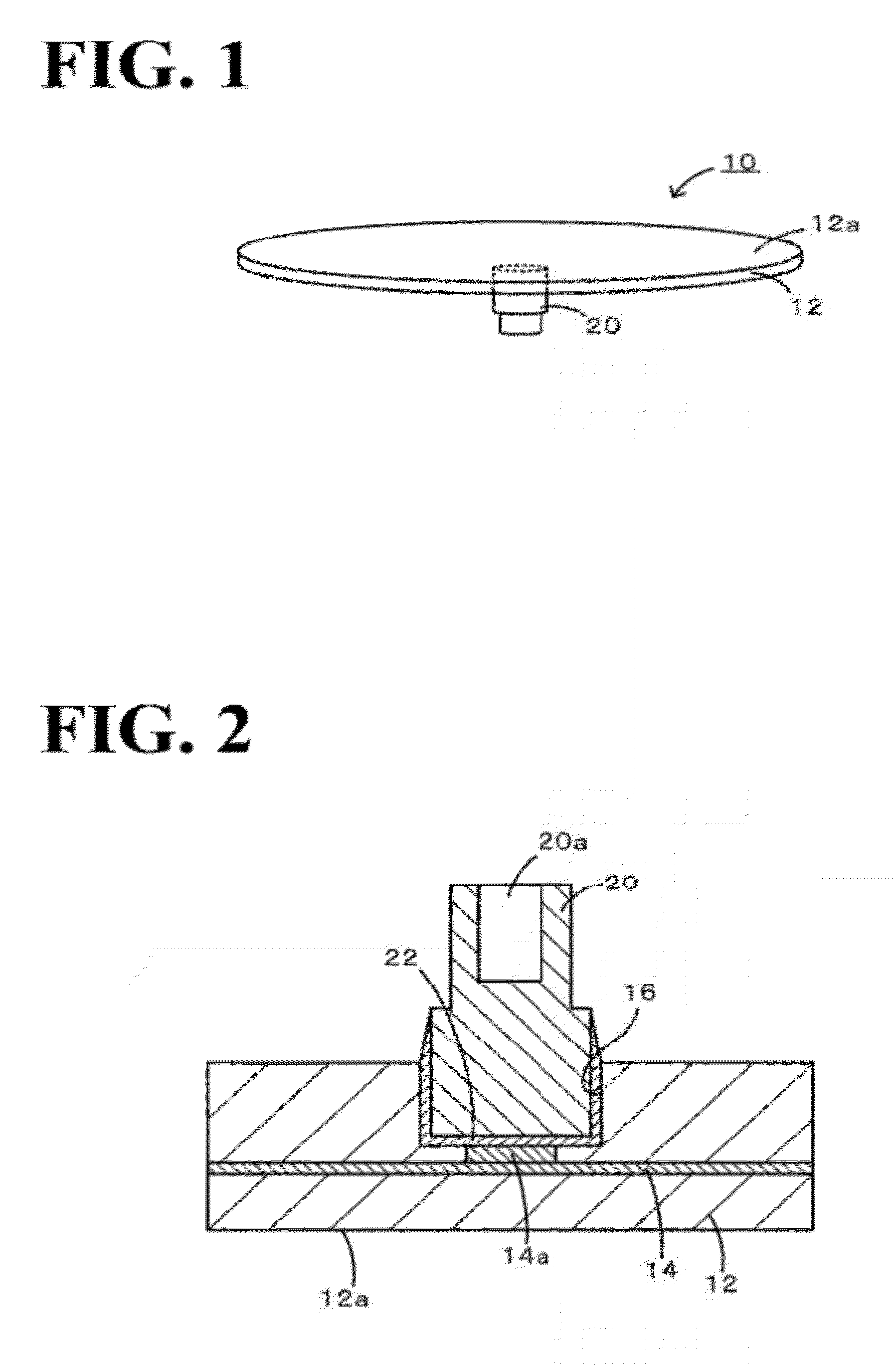Member for semiconductor manufacturing apparatus
a manufacturing apparatus and semiconductor technology, applied in the direction of semiconductor/solid-state device manufacturing, electric devices, basic electric elements, etc., can solve the problems of high residual stress at the time of joining and insufficient joint strength
- Summary
- Abstract
- Description
- Claims
- Application Information
AI Technical Summary
Benefits of technology
Problems solved by technology
Method used
Image
Examples
examples
[0059][1] Production of Specimen
[1-1] Production Procedure of Specimen S1
[0060]Specimen S1 simulating the joining structure shown in FIG. 2 was produced as described below. FIG. 6 is a perspective exploded view of Specimen S1. Initially, a concave portion 74 having a diameter of 6.00 mm and a depth of 0.5 mm was formed in a ceramic substrate 72 having a length of 20 mm, a width of 20 mm, and a thickness of 5 mm. Thereafter, the inside of the concave portion was subjected to a roughing treatment through sandblast, and about 3 μm of electroless Ni plating was applied. As for the material for the ceramic substrate 72, alumina (Al2O3), aluminum nitride (AlN), yttria (Y2O3), silicon carbide (SiC), and magnesia (MgO) were used. Furthermore, a power feed member 76 having a diameter of 5.95 mm and a height of 6 mm and a joining material 78 having a diameter of 5.8 mm and a foil thickness of 100 μm were prepared. Moreover, the value of the C / R ratio of a clearance C calculated by subtracting...
PUM
 Login to View More
Login to View More Abstract
Description
Claims
Application Information
 Login to View More
Login to View More - R&D
- Intellectual Property
- Life Sciences
- Materials
- Tech Scout
- Unparalleled Data Quality
- Higher Quality Content
- 60% Fewer Hallucinations
Browse by: Latest US Patents, China's latest patents, Technical Efficacy Thesaurus, Application Domain, Technology Topic, Popular Technical Reports.
© 2025 PatSnap. All rights reserved.Legal|Privacy policy|Modern Slavery Act Transparency Statement|Sitemap|About US| Contact US: help@patsnap.com



